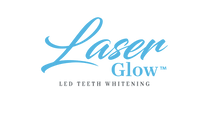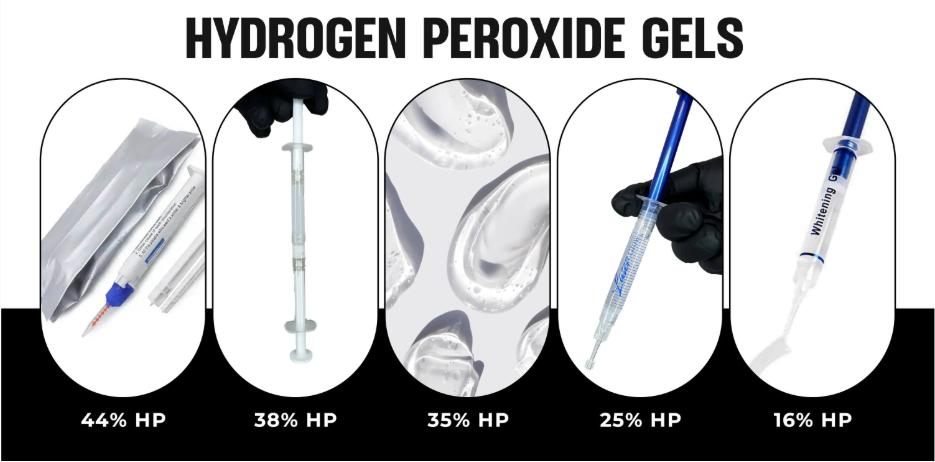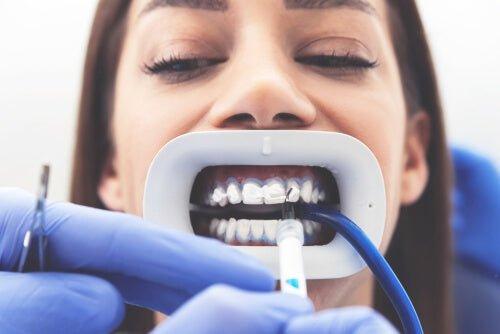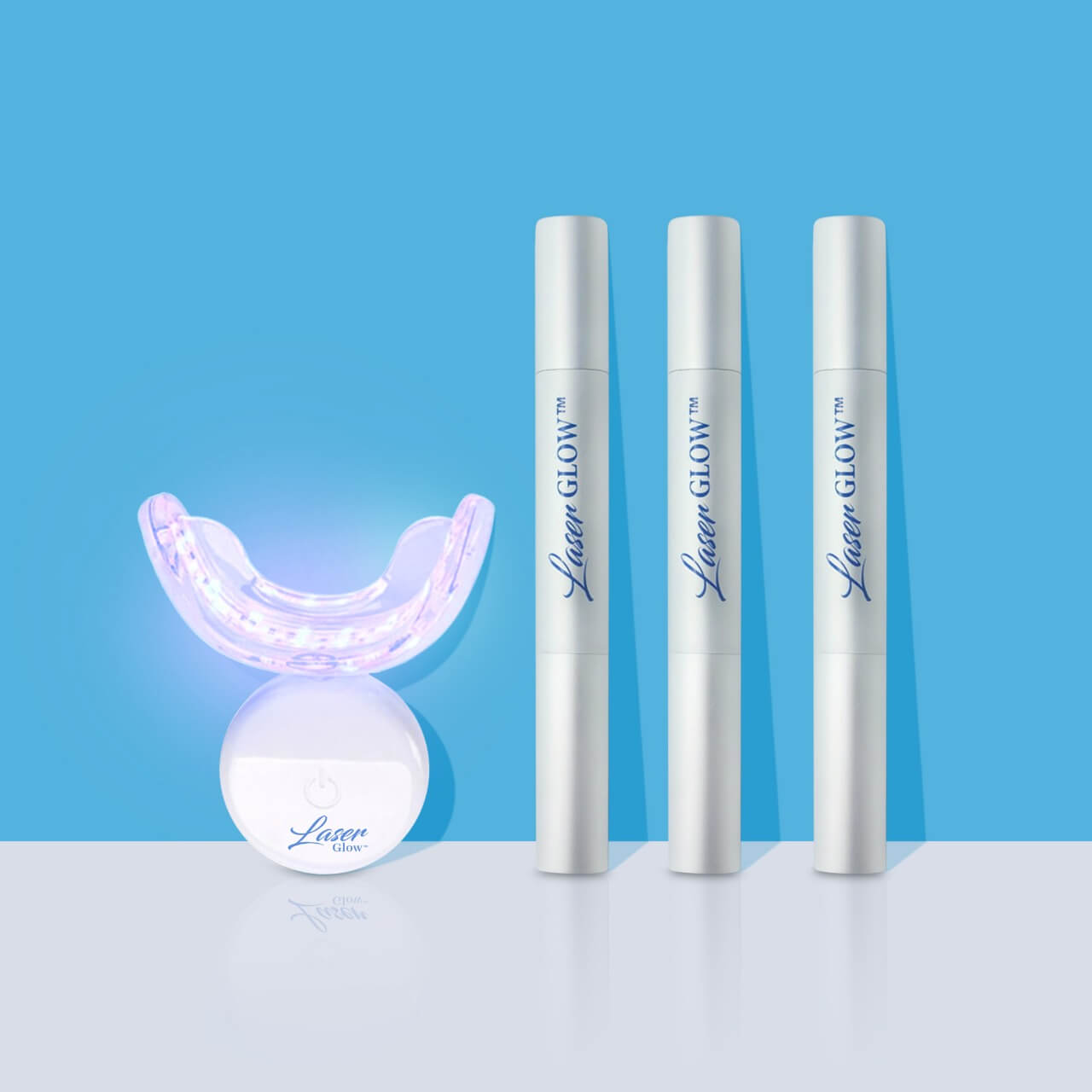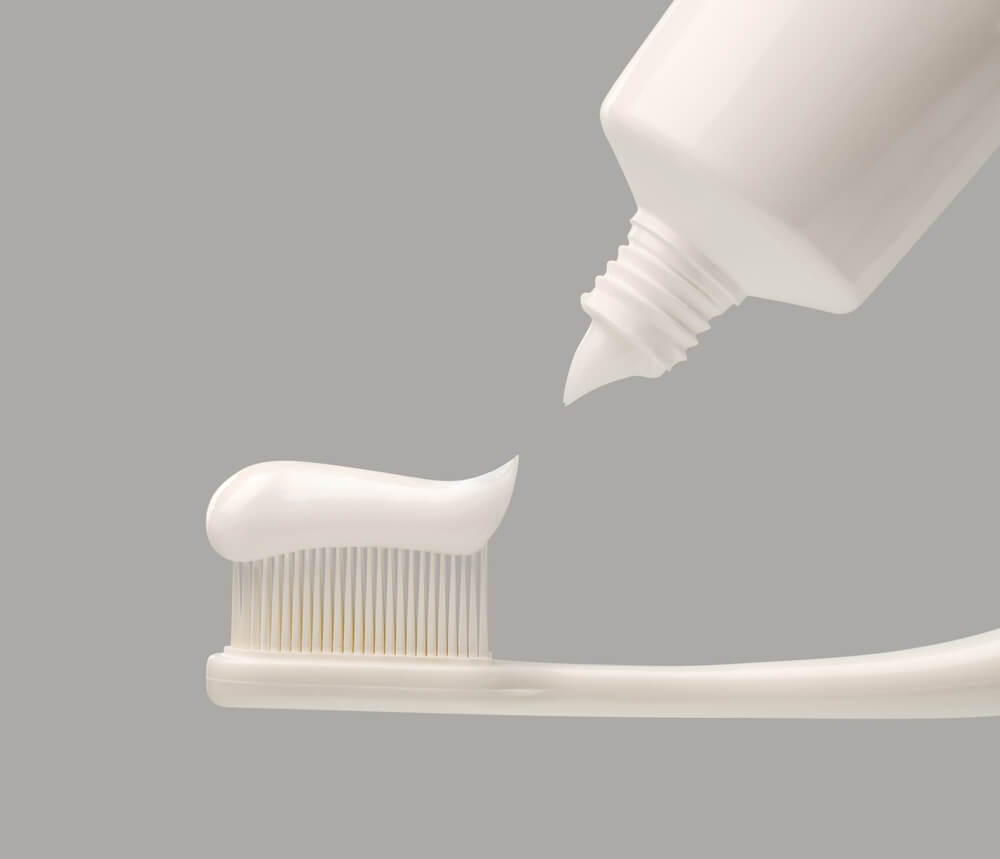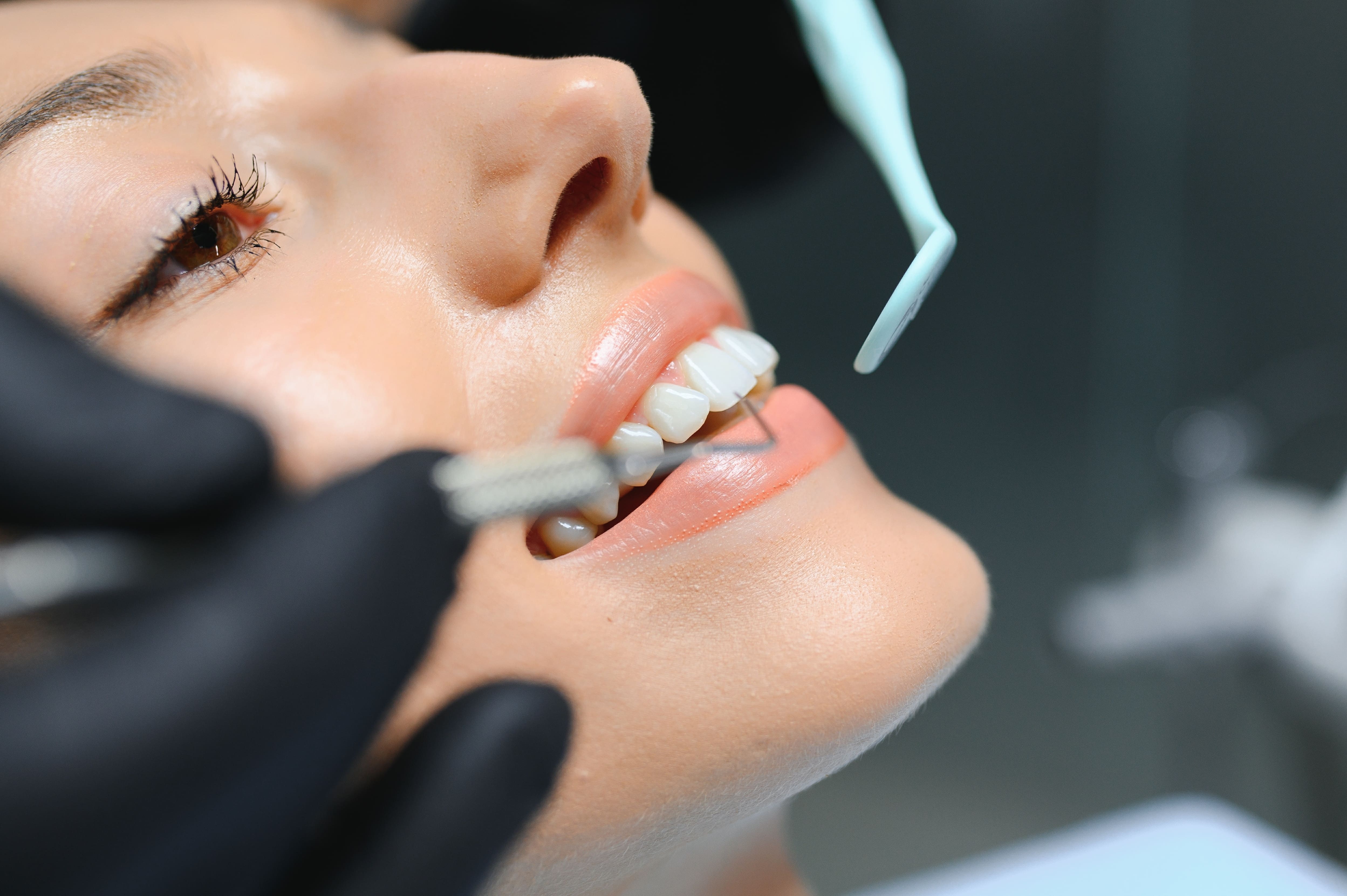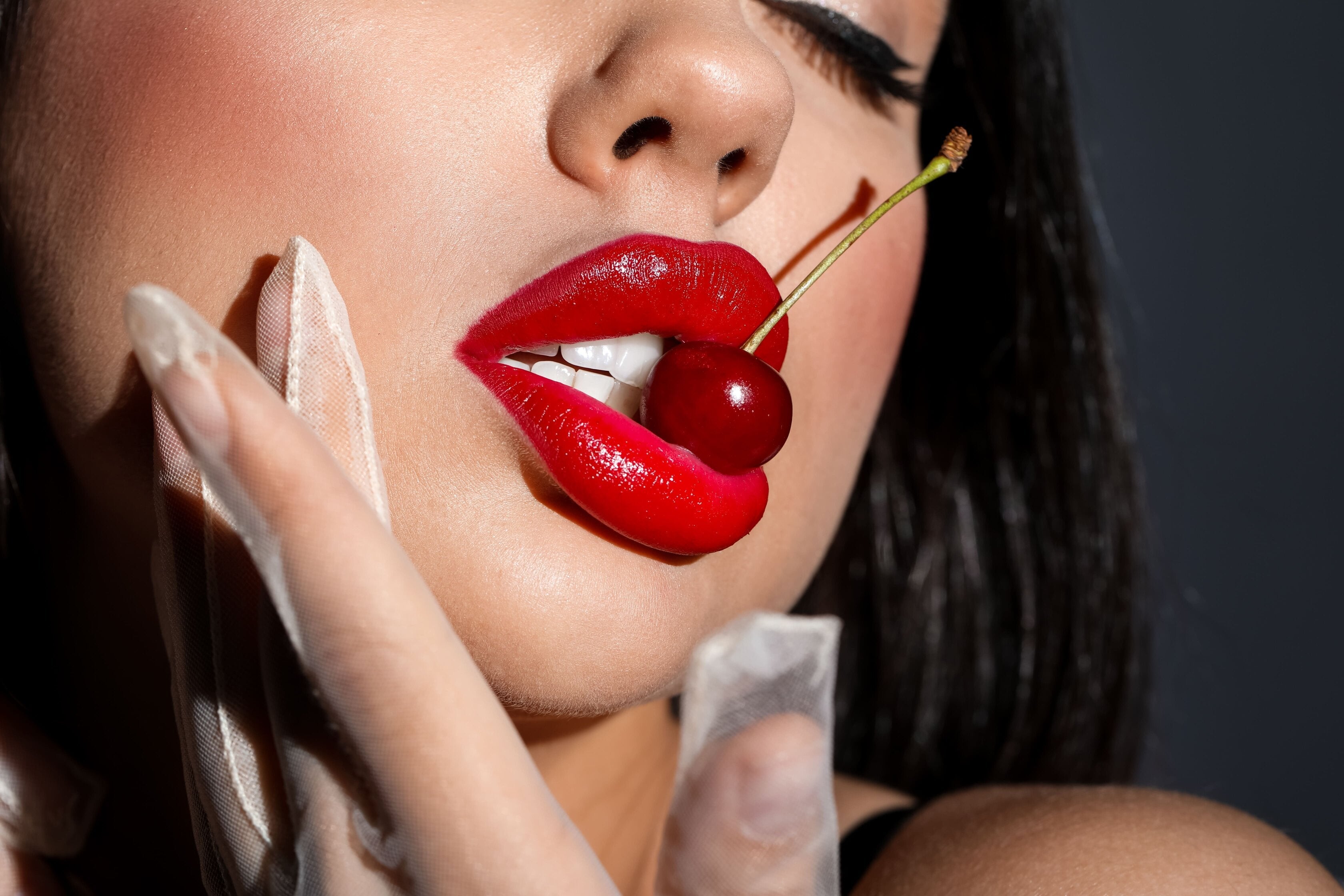38% Hydrogen Peroxide Whitening Gel — Professional Guide
38% Hydrogen Peroxide Whitening Gel — Professional Guide
High-power chairside whitening for moderate–heavy stains. This guide covers indications, strict isolation protocol, sensitivity mitigation, case scenarios, pricing & packaging, and how to position 38% HP within your whitening menu.
Clinical indications & contraindications
Indications
- Moderate–heavy extrinsic/intrinsic staining requiring faster chairside lift
- Time-constrained appointments where fewer cycles are preferred
- Patients who tolerate peroxide well and want significant change in one visit
Contraindications & cautions
- Active caries, untreated periodontal disease, cracks, open cervical lesions
- Pregnancy/nursing (defer to clinician judgment & local regulations)
- Extensive restorations in esthetic zone (whitening affects natural enamel only)
Mechanism of action (chairside overview)
At 38% concentration, hydrogen peroxide exhibits rapid diffusion through enamel and dentin, oxidizing chromogens more aggressively than mid-range strengths. With proper isolation, this yields efficient shade change in one to two cycles, making 38% HP a high-power option for heavier stains and efficiency-focused clinics.
Step-by-step protocol (38% HP)
1) Preparation
- Medical/dental history, baseline shade with standardized lighting
- Prophy as needed; lip/cheek retraction; ensure a dry, clean field
- Pre-op photos for documentation; set expectations for severe stains
2) Isolation
- Gingival barrier is mandatory due to higher concentration
- Cotton rolls, saliva ejector, cheek retractors; protect soft tissues
- Check margins before applying gel; reapply barrier where needed
3) Application
- Attach mixing tip if applicable; express a fresh ribbon each cycle
- Apply a 1–2 mm even layer on facial surfaces; avoid soft tissue contact
- LED is optional for patient comfort/workflow (not required for efficacy)
4) Timing & cycles
- 1–2 cycles × 15–20 minutes depending on stain severity
- Agitate gently mid-cycle to refresh the gel surface
- Monitor comfort in real time; pause if sensitivity rises
5) Finish
- Suction thoroughly, rinse copiously, inspect enamel and gingiva
- Consider desensitizer; record post-op shade and photographs
6) Aftercare
- 48-hour “white diet”; avoid strong pigments, smoking, extremes of temperature
- Recommend 44% Carbamide Peroxide Pen for at-home maintenance
- Add Purple Toothpaste for daily shade upkeep
Sensitivity risk & mitigation plan
Risk factors
- Exposed dentin, cervical lesions, recent whitening, aggressive brushing
- High intake of staining agents, low saliva flow, erosive diet
Case scenarios & recommendations
Moderate staining (4–6 shades)
Run 1–2 cycles × 15–20 minutes. Reassess comfort at minute 10; agitate gel mid-cycle. Plan recall at 6–12 months.
Heavy staining (>6 shades)
Use a progressive approach: start with 25–35% HP if patient is sensitivity-prone, then finish with one 38% HP cycle once isolation/comfort are optimized.
Time-limited session
Choose 38% HP for efficient lift with fewer cycles. Ensure meticulous barrier placement to prevent soft-tissue contact.
Troubleshooting & common pitfalls
- Soft-tissue blanching: Remove gel immediately, irrigate, re-isolate with barrier, and reassess margins.
- Uneven lift: Verify dryness and even gel thickness; agitate mid-cycle; ensure complete coverage of visible enamel.
- Plateau after first cycle: Add a second cycle; if still plateaued, schedule recall or finish with 44% HP only when isolation & comfort allow.
- Post-op sensitivity: Employ desensitizer; reduce hot/cold exposure; recommend CP pen maintenance.
Storage, handling & compliance
Storage
- Keep sealed, cool, and away from heat/sunlight; follow label guidance
- Track expiration and rotate inventory (first-in, first-out)
Compliance & consent
- Use only in professional settings under applicable regulations
- Obtain informed consent; document baseline/post-op shades and photos
Pricing, packaging & positioning
Positioning
“High-power clinic whitening for moderate–heavy stains.” Ideal for efficiency-focused practices and clients wanting a big change in one visit.
Packaging ideas
- High-Power Package: 38% HP + Barrier Gel + post-op desensitizer card
- Elite Package: 38% HP + Automatic Mixing Tips + 44% CP Pen
Compare 38% HP to other strengths
| Strength | Best For | Typical Cycles | Notes |
|---|---|---|---|
| 25% HP | Most routine cases | 2–3 × 15–20 min | Balanced power & comfort |
| 35% HP | Faster lift with control | 1–2 × 15–20 min | Barrier recommended |
| 38% HP | Moderate–heavy stains | 1–2 × 15–20 min | Barrier mandatory |
| 44% HP | Severe stains / premium | 1–3 × 15–20 min | Meticulous isolation |
| 16% HP | Light stains / sensitive | 2 × 15–20 min | Gentler profile |
FAQ — 38% HP
- How many shades can patients expect? Often 3–7 shades depending on baseline and stain type.
- Is LED required? No; it’s optional for comfort/workflow.
- Do restorations whiten? No. Only natural enamel responds.
- How often can they whiten? Typically every 6–12 months, with maintenance between visits.
- How to reduce sensitivity? Strict isolation, shorter cycles, desensitizer, and a 48-hour white diet.
- When to choose 38% vs. 35%? Choose 38% for moderate–heavy stains or time-limited sessions; 35% when you want strong lift with slightly more control.
- Can I combine strengths? Yes—progressive protocols are common. Finish strong when isolation and comfort allow.
- Which add-ons help most? Gingival barrier, mixing tips for even application, and CP pen + purple toothpaste for maintenance.

